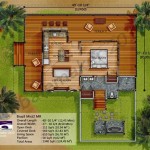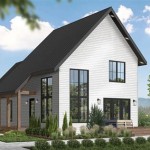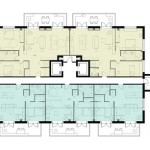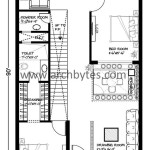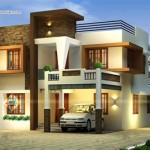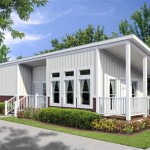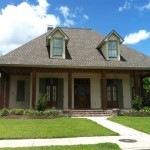3D House Plan Pictures: Visualizing Your Dream Home
In the realm of home design and construction, envisioning the final product before a single brick is laid is paramount. 3D house plan pictures serve as invaluable tools in this process, allowing homeowners, architects, and builders to visualize the structure, layout, and aesthetics of a future dwelling with remarkable clarity. These digital representations bridge the gap between abstract plans and tangible reality, fostering informed decision-making and minimizing potential design mishaps.
Benefits of 3D House Plan Pictures
The power of 3D house plan pictures lies in their ability to transform complex blueprints into immersive experiences. These digital representations offer a multitude of benefits, enhancing the design process and ensuring a more successful outcome.
1. Enhanced Visualization
The primary advantage of 3D house plan pictures is their capacity to provide a highly realistic and comprehensive visualization of a future home. Unlike traditional 2D floor plans, these images create a sense of depth and perspective, enabling viewers to walk through virtual rooms, explore different angles, and appreciate the overall layout and flow of the space. This enhanced visualization empowers stakeholders to make informed decisions about design elements, materials, and furniture placement.
2. Improved Communication
3D house plan pictures serve as a powerful communication tool, facilitating seamless interaction between homeowners, architects, and builders. The ability to visualize the design in real-time fosters clear communication, minimizing misunderstandings and ensuring that everyone is on the same page regarding the intended outcome. This collaborative approach helps to streamline the design process and prevent costly revisions later in the construction phase.
3. Early Detection of Design Flaws
3D house plan pictures offer the opportunity to identify and address potential design flaws before construction begins. By visualizing the space in three dimensions, stakeholders can detect issues such as awkward layouts, inadequate natural light, or poor flow, allowing for adjustments to be made early on. This proactive approach minimizes costly and time-consuming rework during the construction phase, ensuring a smoother and more efficient project.
Types of 3D House Plan Pictures
The world of 3D house plan pictures encompasses a variety of techniques and software, each offering unique capabilities. Here are some of the most common types:
1. Static Renderings
Static renderings are still images that create a realistic representation of the house from a specific viewpoint. These images are ideal for showcasing overall aesthetics, exterior design, and interior layouts. They are relatively simple to create and can be produced in various formats, including JPEG, PNG, and TIFF.
2. Interactive 3D Models
Interactive 3D models allow users to explore the house virtually, navigating through rooms, changing viewpoints, and examining details from all angles. This immersive experience provides a greater understanding of the space and facilitates informed decision-making regarding design elements and furniture placement. Interactive models are typically created using specialized software and can be accessed online or through dedicated applications.
3. Virtual Reality Tours
Virtual reality (VR) tours offer the most immersive and realistic experience, transporting users directly into the virtual home. Using VR headsets, viewers can walk through rooms, interact with objects, and experience the space as if they were physically present. This technology is particularly beneficial for gaining a complete understanding of the home's layout, lighting, and overall ambiance.
Creating 3D House Plan Pictures
The creation of 3D house plan pictures typically involves a collaborative effort between architects, designers, and specialized software.
1.
Initial Design Phase:
Architects and designers begin by creating a 2D floor plan, outlining the basic layout, room sizes, and structural elements. This initial plan serves as the foundation for the 3D model.2.
3D Modeling Software:
Specialized software programs, such as SketchUp, Revit, and 3ds Max, are used to convert the 2D plan into a 3D representation. These programs allow for the addition of details, materials, textures, and lighting, bringing the virtual house to life.3.
Rendering and Visualization:
Once the 3D model is complete, it is rendered to create realistic images or interactive experiences. Rendering involves applying light, shadows, textures, and materials to the model, producing high-quality visualizations.4.
Iteration and Refinement:
The 3D house plan pictures are then shared with the homeowner, allowing them to provide feedback and suggest revisions. The design team iterates on the model, incorporating feedback and making adjustments until the homeowner is fully satisfied with the virtual representation of their future home.
How Much Do 3d House Plans Cost Faqs Answered Cedreo

3d Floor Plans

20 Splendid House Plans In 3d Pinoy

How Do You Make A 3d Floor Plan

3d Floor Plan Imagens Procure 976 Fotos Vetores E Vídeos Adobe Stock

3d Floor Plans

What Is 3d Floor Plan How To Make It Benefits Cost

1000 3d Floor Plans And Home Design Ideas To Build Free Plan House Imagination Shaper

Sweet Home 3d Draw Floor Plans And Arrange Furniture Freely

20 Designs Ideas For 3d Apartment Or One Y Three Bedroom Floor Plans Home Design Lover House Plan 3

